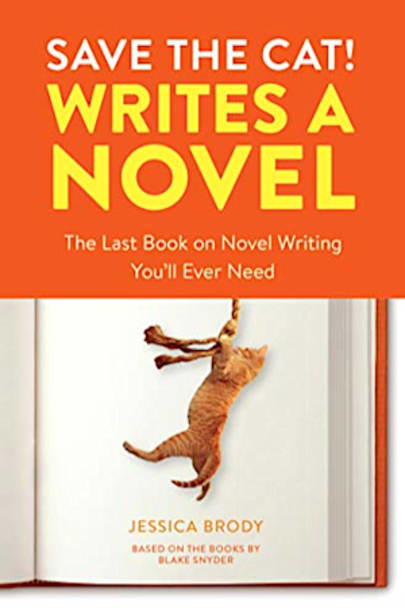The first novel-writing guide from the best-selling Save the Cat! story-structure series, which reveals the 15 essential plot points needed to make any novel a success.Novelist Jessica Brody presents a comprehensive story-structure guide for novelists that applies the famed Save the Cat! screenwriting methodology to the world of novel writing. Revealing the 15 “beats” (plot points) that comprise … (plot points) that comprise a successful story–from the opening image to the finale–this book lays out the Ten Story Genres (Monster in the House; Whydunit; Dude with a Problem) alongside quirky, original insights (Save the Cat; Shard of Glass) to help novelists craft a plot that will captivate–and a novel that will sell.
more



This is a great book for those plotters or pantsers that have trouble with story structure. I am using it to edit a book that lacks story structure and to plot 2 books from the beginning. ( something I would never have done as a pantser!) Easy to follow.
A good book on the craft of plotting a novel. Lots of best practices and recommendations, taken from the study of many, many texts. A quick read, definitely recommend for aspiring novelists.
Haven’t read the original, but found this one very helpful.
I debated for the longest time whether I should get this book or not. Many years ago, I read the original Save the Cat! and loved it so much that I bought my own copy. I wasn’t sure this version would be different enough to justify buying it, but I do love a book on writing. So, I eventually caved because I figured I’d learn *something* and, well, because I wanted it #noselfcontrol
Best decision I’ve made this month!
Not only did I learn things, I copied one of the drawings and pinned it to my desk, and it’s solved several plot issues I’ve been having with my WIP (How Long ’til Black Future Month by NK Jemisin solved the other).
I’ve had a pretty good structure in place before – a mixture between the original Save the Cat! beat sheet and the one suggested by KM Weiland – but I always felt there was something missing. The one in this book seems to have everything for me, but I’ll see what happens when I actually use it to plot today. Right now, it feels like a WIP saver!
This is now a firm favourite. I’ve gone through it with a highlighter, and I’ve marked a few pages which I know I’ll be coming back to. I admit, I’ve skipped most of the longer examples, but I’ll likely go through them when I’m stuck in my plot and need that extra inspiration.
If you’ve been on the fence about buying this like I was, I’d say go ahead and buy it! Even if you’re a pantser, I think you’ll take something away from this book since she also explains the key elements a successful plot needs – no sitting down to draw up a massive outline required if that’s not your thing. Personally, I’m a plotster and currently eyeing a corkboard on Amazon.
There are many books on how to structure and plan a story, a fictional novel. As a new writer, I plan to read them all. Or at least try to read as many as I can to learn the craft of fiction. As an artist, I am familiar with storyboarding, illustrating, and sketching the bones of each structure format into a visual drawing to assist my right brain assimilation. Save the Cat is a marvelous format. It was the 3rd book I devoured since I began my search for order and organization of my thoughts and ideas. I recommend heartily. The colorful images and the 15 beats novel structure template beg to be illustrated and mapped. You won’t regret buying this gem of a resource. Refer to it often to manage the beats and scenes within your next novel idea! One of my favorite writing resources to date.